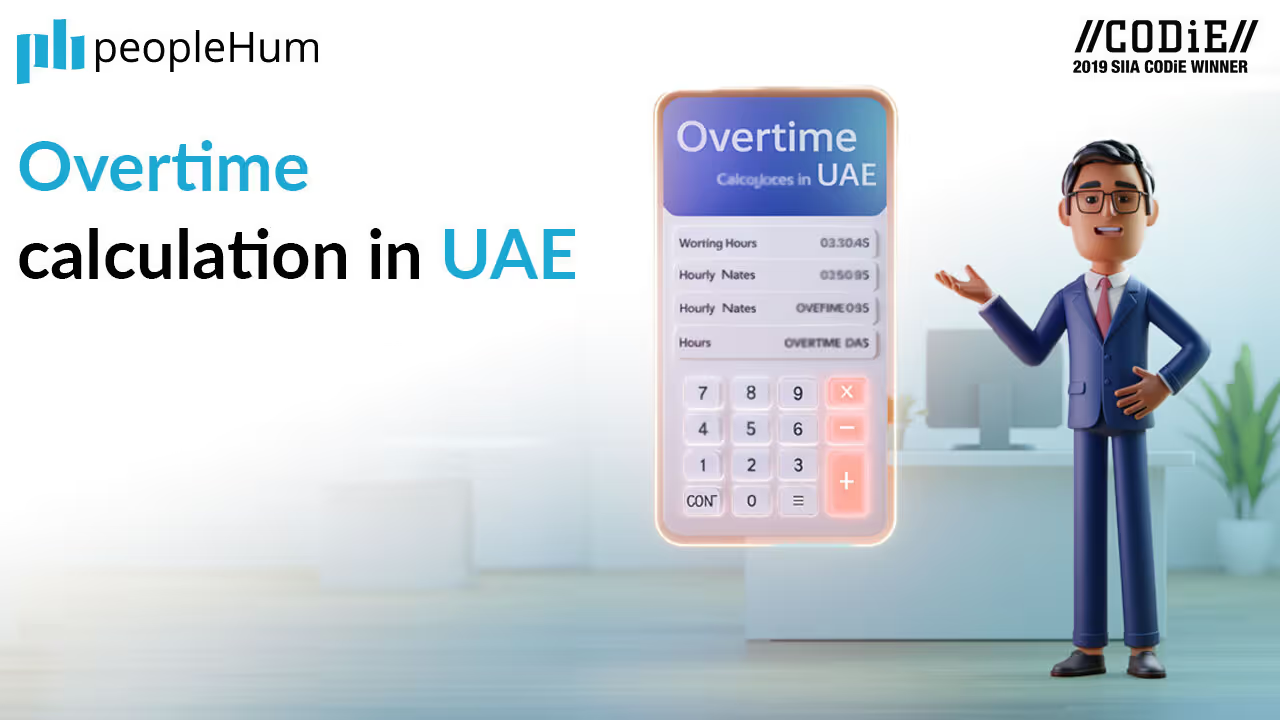Why Accurate Overtime Calculation in India Matters
Overtime calculation in India isn’t just about crunching numbers at month-end. It’s a crucial compliance checkpoint that safeguards both employers and employees. When hours stretch beyond regular work schedules, understanding how to calculate overtime accurately builds trust, keeps the payroll department happy, and steers clear of costly legal penalties. And for employees who put in those extra hours, it’s not merely a financial incentive; it’s recognition of their dedication. In this guide, we’ll unpack the legal framework, walk through rate definitions, break down calculation formulas, and illustrate each step with real-world examples. By the end, you’ll not only master the theory but also have practical tips and tools to streamline your overtime processes.
1. Understanding Overtime Laws in India
In India, overtime rules derive primarily from two sources: the Factories Act, 1948 and the various state-level Shops and Establishments Acts. The Factories Act applies to manufacturing units employing ten or more workers, while Shops and Establishments Acts cover commercial enterprises, offices, and shops. Under these statutes, the maximum normal working hours are capped at nine hours a day or forty-eight hours a week. Any work beyond this threshold qualifies as overtime. Importantly, these laws aim to balance organizational needs with worker welfare by preventing excessive work hours and ensuring fair compensation for extra effort.
2. Who Is Eligible for Overtime in India?
Not every employee automatically qualifies for overtime pay. The term “workman” under the Factories Act generally covers workers involved in manual, technical, or supervisory roles but excludes managerial or administrative staff earning above a prescribed wage threshold. Similarly, state Shops and Establishments Acts may exempt managerial cadre or specific categories of employees such as sales staff in certain sectors. Always verify your local state act, since definitions and exemptions can vary. When in doubt, consult your legal or HR team to prevent misclassification and potential disputes.
3. Standard Overtime Rates in India
Statutorily, overtime pay must be at least twice the normal rate of wages under the Factories Act. For example, if an employee’s hourly wage is ₹100, overtime hours should be paid at ₹200 per hour. Under Shops and Establishments Acts, some states mandate the same double-rate minimum, while others may have slightly different multipliers—for instance, 1.5× or 2×—for weekly offs and public holidays. Always check your state’s specific provisions. In practice, many organizations adopt the double-rate standard across all overtime scenarios for simplicity and to maintain consistency.
4. Determining the Normal Hourly Rate
Before applying overtime multipliers, you must first calculate the employee’s normal hourly rate. For monthly-salaried employees, divide the gross monthly salary (including fixed allowances but excluding performance bonuses) by the number of working days in the month, and then by the standard daily working hours. For instance, a ₹30,000 salary over 26 working days at nine hours per day yields an hourly rate of approximately ₹128. Allowances like house rent or transport can be prorated into the base if your company policy includes them for overtime. Variable pay components and reimbursements, however, are typically excluded unless explicitly stated in the employment contract.
5. How to Calculate Overtime in India
Once you have the normal hourly rate, the overtime calculation is straightforward. Use this formula:
Overtime Pay = Number of Overtime Hours × Normal Hourly Rate × Overtime Multiplier
Here, the “Overtime Multiplier” is usually 2 under the Factories Act. If your state act specifies a different rate, for example, 1.5× for weekly offs—adjust accordingly. This simple approach ensures visibility into each component and makes audits easier. Remember to handle partial hours with consistent rounding rules, such as to the nearest 15 minutes, to avoid disputes and maintain transparency.
6. Overtime Calculation Scenarios
Overtime can arise under three common scenarios:
- Weekday Overtime: Hours worked beyond nine in a day, up to the weekly limit.
- Weekly Off Overtime: Any work on a designated weekly holiday (often Sunday) counts as overtime, potentially with a separate multiplier.
- Public Holiday Overtime: Work done on gazetted holidays typically attracts the highest multiplier, sometimes up to 3× the normal rate as per some state acts.
By categorizing overtime into these buckets, payroll teams can apply the correct rate and generate clear reports for each type.
7. Step-by-Step Example Calculations
Let’s bring these concepts to life with three practical examples:
Example 1 – Weekday Overtime
- Monthly salary: ₹24,000
- Working days in month: 24
- Daily hours: 9
- Hourly rate = 24,000 ÷ (24 × 9) = ₹111.11
- Overtime multiplier: 2
- OT hours: 10 on a weekday
- OT pay = 10 × 111.11 × 2 = ₹2,222.20
Example 2 – Weekly Off Overtime
- Hourly wage worker at ₹120/hour
- Weekly off multiplier: 2
- OT hours on weekly off: 5
- OT pay = 5 × 120 × 2 = ₹1,200
Example 3 – Mixed Scenario
- Weekday OT: 4 hours at ₹150/hour
- Public holiday OT multiplier: 3
- Public holiday OT: 6 hours
- Weekday OT pay = 4 × 150 × 2 = ₹1,200
- Holiday OT pay = 6 × 150 × 3 = ₹2,700
- Total OT pay = ₹3,900
8. Common Pitfalls and How to Avoid Them
Even seasoned payroll teams can stumble over these pitfalls:
- Misclassification of Eligibility: Applying overtime to exempt employees can invite legal scrutiny. Always cross-check job roles against statutory definitions.
- Incorrect Rate Conversions: Forgetting to prorate allowances or mishandling variable pay may skew hourly rates. Maintain a standardized rate-calculation template.
- Rounding Errors: Inconsistent rounding can lead to pay discrepancies and erode trust. Decide on a rounding rule—nearest 5, 10, or 15 minutes—and apply it uniformly.
- State-Level Overlook: Assuming one-size-fits-all across states can backfire. Keep a state-wise compliance matrix updated each financial year.
By building robust checks into your payroll process, you’ll avoid errors and gain peace of mind.
9. Best Practices & Tools for Seamless Overtime Computation
Manual spreadsheets have their limits, especially in high-volume environments. Consider these best practices:
- Automate with HRMS/Payroll Software: Modern payroll systems can automatically track work hours, flag overtime, and apply the correct multipliers.
- Use Digital Timesheets: Encourage employees to punch in and out via mobile apps or web portals. Digital logs reduce time theft and simplify audits.
- Audit Trails: Ensure your system logs any manual overrides or adjustments, complete with timestamps and user IDs.
- Regular Legal Updates: Integrate a compliance calendar into your HRMS so you’re notified when state acts or central guidelines change.
By leveraging technology, you’ll cut down on human error and free your team for strategic initiatives.
10. Ensuring Compliance & Record-Keeping under Indian Labour Laws
Under the Factories Act and state Shops and Establishments Acts, maintaining accurate records is as important as computing pay correctly. You must:
- Maintain Time-Work Registers: Records of daily hours for each eligible employee.
- Preserve Overtime Registers: Separate registers detailing the date, hours worked, rate applied, and total OT pay.
- Retain Documents: Keep records for at least three years (as per most state acts) to satisfy inspection requirements.
- Be Inspection-Ready: During labor department visits, provide clear, legible registers and digital backups.
Strong documentation not only demonstrates compliance but also limits liability in disputes or audits.
Conclusion & Next Steps
Accurate overtime calculation in India blends legal know-how with meticulous rate computation and robust record-keeping. From understanding statutory frameworks to automating your processes with payroll software, the steps outlined here will fortify your compliance strategy and ensure fair, timely pay for your workforce. Ready to simplify and secure your overtime management? Book a free demo of peopleHum’s Manage module today and experience seamless overtime tracking, calculation, and reporting all in one platform.
Frequently Asked Questions (FAQs)
1.What counts as overtime under Indian labour laws?
Overtime is any work beyond nine hours in a day or 48 hours in a week (Factories Act, 1948) or beyond the daily/weekly limits set by your state’s Shops & Establishments Act. It also includes work on weekly offs and public holidays when statutory limits apply.
2.Can employers offer compensatory time off instead of overtime pay?
Yes, many organisations provide Compensatory Off (Comp Off) where employees take paid time off later. This must be at the same or higher rate and scheduled within a reasonable time (typically within 30–60 days) as per company policy and state guidelines.
3. Do allowance components (e.g., HRA, transport) factor into overtime rate?
Fixed allowances that are a regular part of gross salary (like HRA or transport) can be prorated into the overtime rate if your company policy or employment contract specifies. Variable or performance-based pay is generally excluded unless explicitly stated.
4. How should I round off overtime hours for payroll?
Common practices include rounding to the nearest 5, 10, or 15 minutes. Choose a consistent rule, document it in your payroll policy, and apply it uniformly to maintain transparency and avoid payroll disputes.
5. What documentation is required for overtime compliance?
Maintain time-work registers, overtime registers showing date/hours/rates, and digital punch-in logs. Retain records for at least three years (or as per your state act) to satisfy labour inspections.
6. Is there a maximum overtime limit per employee?
The Factories Act caps overtime at 50 hours per quarter (i.e., 150 hours per year), beyond which special permission from the Chief Inspector of Factories is required. State acts may have their own quarterly or yearly caps—confirm with your local labour authority.
7. How can I automate overtime calculation in my organisation?
Implement an integrated HRMS or payroll platform with digital time-tracking, built-in multipliers, and audit-trail capabilities. Look for features like mobile punch-in, auto-rounding rules, and state-wise compliance templates to streamline the process.



































.png)














